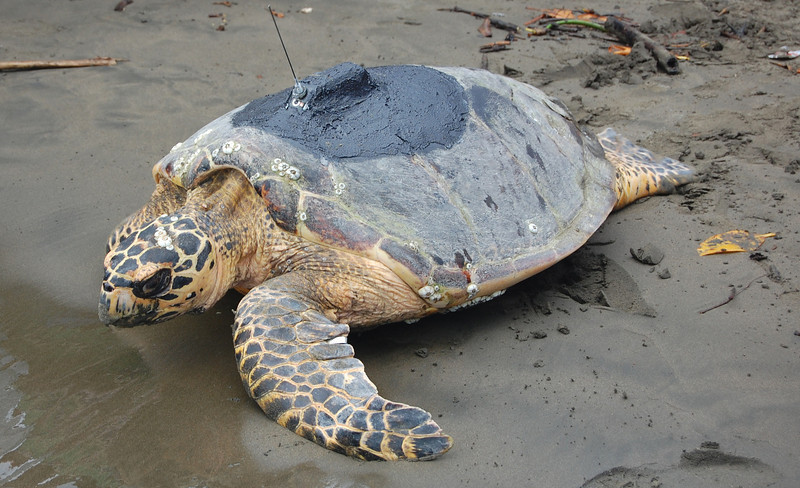We're open daily! View holiday hours
Science News
Rediscovering Hawksbills
September 7, 2011

When the going gets tough, the tough get going. At least that’s how the saying goes. In the case of hawksbill turtles (Eretmochelys imbricata) it looked like they weren’t just going, but gone.
On the endangered species list since 1975, they had disappeared from the Pacific from Mexico to Peru due to egg harvest, coastal habitat destruction and fisheries by-catch.
But scientists tracking hawksbills recently discovered that the turtles hadn’t completely disappeared, but had simply found another habitat: mangrove saltwater forests.
“We were really shocked to see that adult hawksbills weren't even using coral or rocky reefs or any habitats that were even remotely similar to habitats they associate with in other parts of the world,” lead scientist Alexander Gaos of San Diego State University said. Observers found nesting beaches for the hawksbills in El Salvador, Nicaragua, Costa Rica and Ecuador.
The Academy’s Wallace “J” Nichols has studied these turtles for 20 years and worked with Gaos in tracking these turtles. (Science in Action did a story on J’s work tracking sea turtles a few years ago—take a look here.) A co-author on the paper, published last week in Biology Letters, J gave us the good news via email:
It's quite possible that the hawksbills have been mangrove dwellers all along, but they've been scarce and unstudied… What we are dealing with is a remnant population and everything we learn about it is new.
We think there are enough hawksbills around to make a fair run at restoring them to more stable levels.
However, this discovery of this population's reliance on confined mangrove habitats is also bad news for the hawksbills. The proximity of these habitats to human communities places the hawksbills under severe threats throughout the region like the use of deadly explosives for fishing, rampant egg collection for human consumption and excessive habitat degradation.
“These findings show that conservation of mangrove estuaries and coastal wetland habitats is important not just for rare species like hawksbills, but also for the critical ecosystem services these habitats provide,” said Bryan Wallace of Conservation International, a collaborator on the project. Mangrove habitats not only act as nurseries for juvenile marine animals, many of which are important food sources for humans, like fish and crabs, but they also serve as land buffers from storms and natural water filters.
Involving locals in the project is essential reports the BBC:
The scientists worked with local fishermen and even illegal egg collectors, in order to find hawksbill turtles…
And the LA Times:
Scientists are collaborating with coastal villages in the vicinity of the mangroves to “create community-based conservation programs,” said Bryan Wallace…
… a point that J confirmed via email:
Alex and [co-author] Ingrid [L. Yañez] have combined grassroots networking with solid science to great effect.
Let’s hope these tough turtles are here to stay.
Image by Alexander Gaos